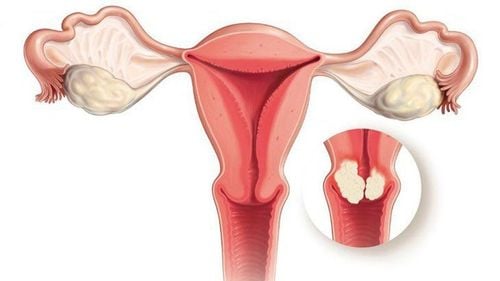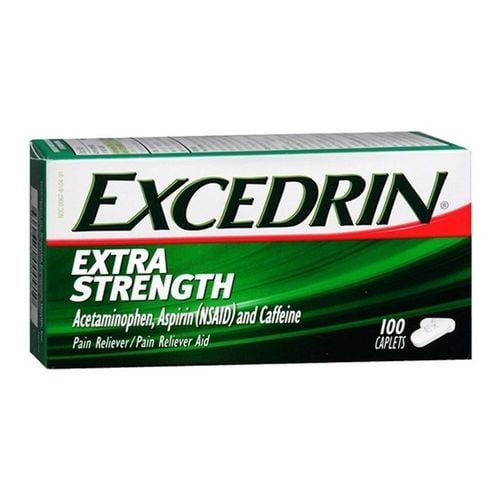This is an automatically translated article.
Ciclesonide is used to treat allergic rhinitis, to help relieve symptoms of nasal congestion, menstrual pain, itchy nose and sneezing. Let's learn about the uses and notes when using Ciclesonide through the article below.1. What are the uses of Ciclesonide?
Ciclesonide contains the active ingredient Ciclesonide - belongs to the group of glucocorticoids. The drug is prepared in the form of a nasal spray with 2 strengths, 50mcg and 37mcg. Ciclesonide is indicated in the following cases:Allergic rhinitis; Symptomatic treatment of seasonal allergic rhinitis, year-round allergic rhinitis; Relieves symptoms of stuffy nose, itchy nose, sneezing.
2. Dosage and how to use Ciclesonide
Ciclesonide drug used to treat allergic rhinitis is used by spray. Each vial contains 12.5g of Ciclesonide providing 120 dosing sprays. The effect of the drug is usually achieved within 24 - 48 hours after treatment, symptoms improve further in 1-2 weeks for seasonal allergic rhinitis and about 5 weeks for perennial allergic rhinitis. . The dose should be gradually reduced to the lowest effective level once symptoms are under control. The recommended dose of Ciclesonide is as follows:
Adults: Seasonal Allergic Rhinitis: The recommended dose is 100mcg (2 sprays) in each nostril once daily (total dose is 200mcg/day); Perennial Allergic Rhinitis: The recommended dose is 100mcg in each nostril once daily (total dose is 200mcg/day). Children under 12 years old use the drug as directed by the treating doctor. Ciclesonide spray is used as follows:
Shake the spray pump gently before use; Before using the drug for the first time, the patient needs to activate the injection pump 8 times. In case after about 4 days (or longer) do not use the drug, it is necessary to activate the pump 1 time or many times until a fine spray appears; Patients need to clear the nasal passages before using the drug; Tilt your head forward, insert the spray tip into one nostril and hold the bottle upright. Point the tip of the nose away from the nasal septum; The patient proceeds to pump the medicine into one nostril, and at the same time seal the other nostril. Repeat the spray action for the other side of the nose; Wipe the pump with a paper towel after use.
3. Side effects of the drug Ciclesonide
Ciclesonide can cause some unwanted effects as follows:
Common: Nosebleeds, headache, nasal discomfort, nasopharyngitis, sore throat; Uncommon: Nosebleeds, headache, fever, muscle pain, nasal congestion, runny nose, sore throat, unusual weakness, fatigue; Rare: Boils or acne , burning , blistering , crusting , peeling skin , darkening , difficulty breathing , diarrhea , difficulty swallowing , eye pain , fainting , loss of consciousness , loss of appetite , severe redness, swelling or soreness of the skin, vomiting, tightness in the chest, weight gain around the face and neck, wheezing.
4. Notes when using Ciclesonide
Contraindications to the use of Ciclesonide:
Contraindications to the use of Ciclesonide in patients with hypersensitivity to Cicleosonide or to any of its ingredients. Precautions for use:
Ciclesonide should be used with caution in patients switching from systemic to intranasal corticosteroids, because of corticosteroid withdrawal symptoms (eg, myalgia, arthralgia, depression). nausea); Exacerbations of asthma and severe symptomatic acute adrenal insufficiency or other clinical manifestations may occur. For patients with asthma or other clinical conditions requiring long-term systemic corticosteroid therapy, rapid reduction in systemic corticosteroid dose may lead to severe symptomatic exacerbations. Patients treated with corticosteroids should be considered for the risk of immunosuppression. Avoid contact with people with measles, chickenpox in patients who have not been vaccinated and patients who have not been exposed before. Ciclesonide should be used with caution in patients with known hypersensitivity to other corticosteroids, because of the possible risk of cross-sensitization. Note for pregnant women: Ciclosonide belongs to group C, so it should not be used in pregnant women. Caution for lactating women: Studies have shown that Cicleosonide is distributed into breast milk, therefore caution should be exercised when administering the drug to a nursing woman.
5. Drug interactions
Ciclesonide can cause some drug interactions as follows:
Ketoconazole : Increases the concentration of inhaled Cicleosonide by mouth; Warfarin : Does not affect the plasma protein binding of Cicleosonide; Salicyclic Acid: Does not affect the plasma protein binding of Cicleosonide. Drug interactions that occur can increase the risk of experiencing side effects, reduce the effectiveness of the drug. Therefore, patients need to inform the treating doctor of all medicines they are using (including prescription and non-prescription drugs, functional foods) to ensure safety and effectiveness when using drugs.
Above are the uses, doses and notes when using Ciclesonide. To ensure the safety of your health and maximize the effectiveness of treatment, you need to take the medicine exactly as directed by your doctor.
Please dial HOTLINE for more information or register for an appointment HERE. Download MyVinmec app to make appointments faster and to manage your bookings easily.













